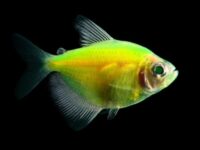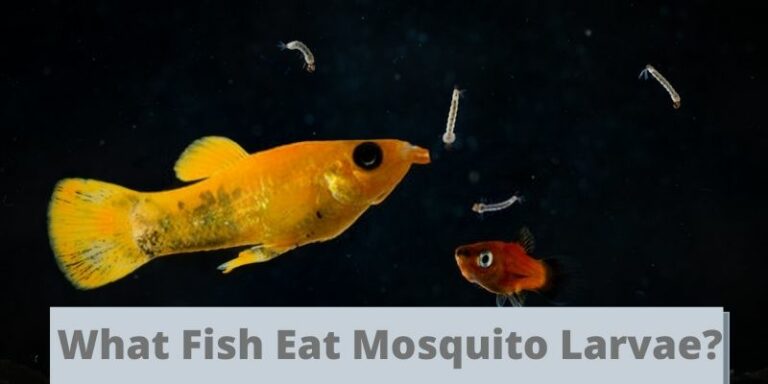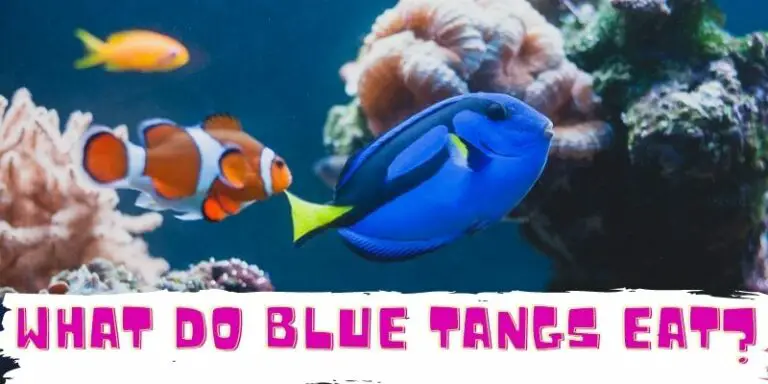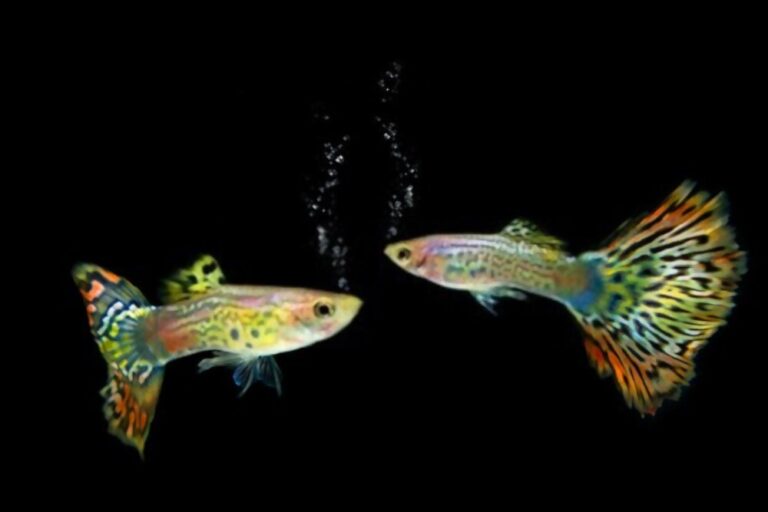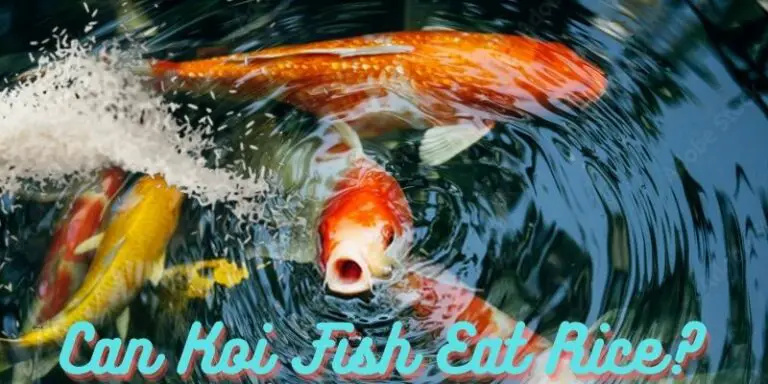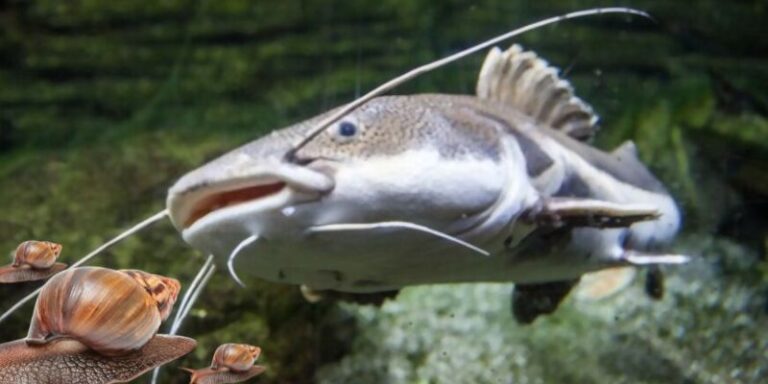What Do Glofish Eat? (Feeding Guide & Best Foods)
Before coming to the question that what do glofish eat and feeding your glofish, let us introduce this fish to those who have come across this name for the first time.
Glofish is a genetically engineered fish of the original tetra fish, barbs, Rainbow sharks, and zebrafish, also known as Zebra danio. It is native to the freshwater of India and Bangladesh.
Glofish is found in aquariums all over the world. It is basically a fluorescent fish that comes in a lot of colors.
A lot of people wonder if it is genetically engineered fish. Then, what would be its diet, and there must be something peculiar that they would eat?
The simple and short story is that the glofish was just modified at its color-producing gene, and the food for this fish is no different than its natural counterpart.
What kind of food do glofish eat?
Glofish is a genetically engineered fish of the original tetra fish, barbs, Rainbow sharks, and zebrafish, also known as Zebra danio. It is native to the freshwater of India and Bangladesh.
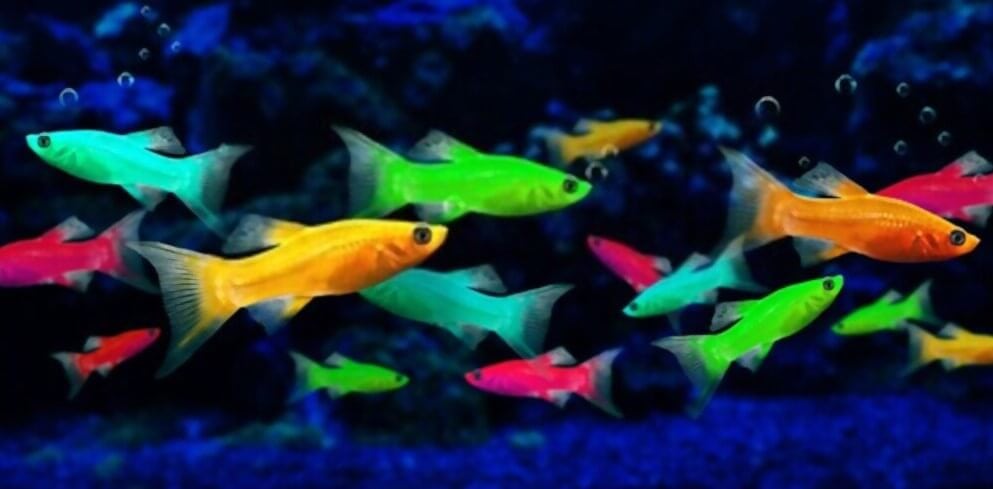
Glofish species have a wide range of nutritional requirements, which can be fulfilled only when given a balance of the required diet.
Live and frozen meaty foods like brine shrimp, bloodworms, commercially prepared flakes, and pellets, along with occasional veggies, make up the best staple for the glofish.
Live foods are the best source for the need for proteins. However, frozen foods are preferred to be a part of daily feeding because live foods are more likely to pass parasitic infections to the fish.
However, giving live food twice or thrice a week would bring out the natural predatory instinct of your glofish, which is fascinating to watch. Flake food, along with a mix of finely chopped frozen foods, should be given as a food staple.
Does glofish need special food?
Glofish don’t need any special kind of food. However, there are special flakes in the markets containing ingredients that enhance the brightness of the fish.
These flakes are specially designed for glofish and are known by the name Glofish special color flakes. These flakes are just like normal flakes in their nutritional value, and they don’t provide any additional nutrients except to spark up the brightness of your fluorescent fish.
The colors of glofish are not injected. Rather, they are inherited and passed on through the breeding of glofish. Though, they were engineered for detecting pollution levels in rivers and freshwater bodies.
Their appealing appearance attracted the general public and aquarium hobbyists. Now they are being sold as one of the many popular tropical fishes. They are just like any other tropical fish and have the same feeding behavior as their natural counterpart.
How often should you feed your glofish?
Feeding glofish in the community tank sometimes turns out to be a little challenging because there might be fish quicker in getting the food than your glofish, So you have to ensure that your glofish are getting the fair share of its food.
Like most freshwater fishes, to ensure the well-being of your glofish, it is best to feed it twice a day, and the amount of food which it can finish within 2 minutes.
To simplify and make it easy for you, here is the chart that you don’t necessarily have to follow, but it is best if you do.
| Food | How often | Amount |
| Flake food | These can be used as staple glofish food. Providing the fish with flakes 2 times a day is just fine. | The amount which can be consumed within 120 seconds. |
| Pellets | Adding the pellets on each feeding 3 times a week is optimal for your glofish. | 2 Pellets for each Glofish. Mini pellets are best as they are of compatible eating sizes for glofish. |
| Brine shrimp | Brine shrimp contains essential vitamins, and they should be given either in live or frozen forms. We recommend frozen ones once a week. However, twice a week is also fine and practiced by many hobbyists. | One brine shrimp per fish is enough if they are being fed with it twice a week and 2 per fish once a week. |
| Bloodworms( live and freeze-dried) | Although they are highly enriched with protein, feeding the glofish 2 times a week is more than enough. Too much feeding of bloodworms can cause constipation. | 1/4 teaspoon of live bloodworms per fish and a very small pinch of freeze-dried bloodworms per glofish. |
| Veggies | 2-3 times a week | The amount which can be consumed in 90 seconds |
Can glofish eat betta food?
Now that’s the question that pretty much every novice aquarist asks, as both of these fishes are the most popular aquarium fishes worldwide.
Before we answer this, you must know the feeding behavior and preferences of betta fish. Betta fish are highly carnivorous, and any food specially made for betta contains high and complex proteinaceous ingredients.
While glofish are small omnivorous fish and their digestive system is specified for digesting simpler proteins and plant matter but betta type of glofish.
If you run out of glofish food and the only food available at the spot is betta food. Then you can feed your glofish with betta food.
However, doing the same continuously for a little longer can prove harmful to your glofish because the slow digestive system of the glofish cannot withstand the protein foods designed for the carnivorous digestion of bettas.
But pay Attention!
Recently there is another addition to the glofish family. That is betta glofish, and all of the above cautionary paragraphs about feeding betta food to the glofish will not be suitable for it. Sounds shocking?
Yes, but it is true. The quest to modify organisms whether, for commercial purposes or beneficial purposes, it is not going to end.
Best foods for glofish
Any food which fulfills all the nutritional requirements of your glofish and keeps it healthy can be regarded as the best food.
Different commercially prepared foods for tropical fishes designed specially to boost up their health are combined with live and frozen foods to make up a balance of the diet, which prevents the fish from getting deprived of essential nutrients.
Some best foods for the glofish are bulleted below, but their feeding has been explained up in the chart above.
- Flakes (Glofish special color flakes are also included)
- Bloodworms (live as well as freeze-dried)
- Brine shrimp
- Sinking pellets
- Other frozen meaty foods
- Veggies
- Algae wafers (Occasionally as a part of plant diet)
Causes of overfeeding to glofish
Overfeeding is really dangerous for any fish and is one of the leading causes of all the life-threatening problems for aquarium fish.
Beginner hobbyists do more harm than good by feeding their glofish. They start feeding their fish and don’t know when to stop, resulting in over-feeding the fish unknowingly.
The glofish will continue to eat in the availability of the food, as their instinct tells them to eat whenever the food is around.
This is the same thing that fishes do in the wild because they don’t know when the food will be available next time. An overfed glofish can develop a swim bladder, constipation, and kidney failure problems.
How long can glofish go without eating?
Feeding on time is important, but somehow, you can’t manage to feed your glofish. Let’s say you are out of town on vacation. You may need not worry about it. Glofish varieties can go for a maximum of 2 weeks without being fed.
This is the question that most people ask, and they feel to ask this when they are planning for a long trip or vacation out of town.
Okay! So 2 weeks is the maximum starvation survival time limit of your glofish. But that does not mean that it is okay to keep them hungry all this time.
I don’t find it ethically or morally correct that your table is full of different cuisines and these tiny creatures have nothing to eat
Please assign your trusted neighbor, friend, or family member, to come over to your place once or twice to feed your glofish.
They might not know how to feed and how much to feed your fish. It is better to educate them or best to dish out suitable amounts of food in advance.
Why is my glofish not eating?
What could be the reason for glofish rejecting the food or not showing interest in it?
The reason is obvious that your fish is under stress. Now the stress may occur due to several reasons. Glofish is stressed when housed with the more aggressive and quicker tankmates in approaching the food or overfeeding it.
The first condition is easy to judge. You have to separate your glofish and place them in a tank with the tankmates of compatible behavior, the second condition, which is pretty much dangerous as our point of interest.
An overfed fish is more likely to reject the food. Overfeeding can easily be spotted by checking the water parameters as well.
So, if we wrap it all up, overfeeding is the main reason for your glofish not accepting the food and a killer cause of your beautiful sparkling fish as well.
Last Words
Foods that glofish eat are flakes, pellets, veggies, and other foods that are discussed above. Also, do not try any food which is not recommended to feed glofish. One important thing to keep in mind is not to overfeed glofish with the same food or the various food at one time.
Related Posts




